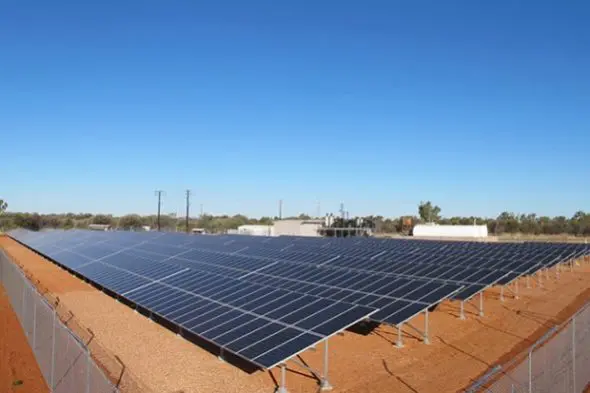My family turned up in Darwin at the beginning of 2018, looking forward to a year of adventure. I was particularly excited to take a break from the climate wars down south. However, it quickly became apparent that the NT was having its own intense debate over the issue of fracking.
In April 2018, the NT government lifted its moratorium which triggered a furious anti-fracking campaign. Campaigners pointed out the damage that would be done to the local environment, the lack of social license and the astounding amount of greenhouse emissions that fracking would cause. The NT government scientific inquiry showed that mining a single large gas field could increase Australia’s total emissions by 6.6 per cent on its own.
Yet, when I spoke to regular people, like the parents at my kid’s new school, their main concern was the state of the NT economy. They didn’t like the sound of fracking but weren’t hearing any other options being put forward that would create jobs and boost the economy.
Being the chair of climate-solutions think-tank Beyond Zero Emissions(BZE), this sounded like an opportunity. The NT has the world’s best solar resource and renewables are now the cheapest form of energy generation.
These two facts could form the basis of a transformation of the NT economy, where a wide range of energy-intensive activities could, for the first time, become economically feasible. This was the genesis of the BZE 10 Gigawatt vision for the NT, which launched on Thursday at Parliament in Darwin.
Read: The 10GW solar vision that could turn Northern Territory into economic powerhouse
The current electricity grid in the NT has a capacity of around 1 Gigawatt (GW). The BZE vision proposes a revolution in the NT economy through building 10GW of renewables. We find that an abundance of cheap, clean electricity will create economic opportunities that lead to over 8000 new jobs in the NT and over $2 billion in revenue.
The mining sector quite probably has the most to gain from this plan. Cheap electricity would allow electrified minerals processing within the NT for the first time. Manganese, zinc and other materials found in the NT could be processed locally, leading to the creation of 750 ongoing jobs distributed around the territory.
The mines, themselves, that yield the raw materials are extremely energy intensive and mainly run off expensive diesel. Our plan shows that we could electrify all mine machinery and vehicles, leading to cheaper operating costs and much healthier worksites. This could secure 3600 existing mining sector jobs in the NT.
One of the biggest advantages that the NT has is its proximity to Asia. The NT could be one of the world’s leading suppliers of renewable energy, exporting electricity directly to Indonesia or Singapore. Modern HVDC cables have made long interconnections technically and economically feasible.
The NT is also well-placed to be Australia’s leading producer and exporter of renewable hydrogen, for which demand is set to boom in East Asia. This is thanks to exceptional renewable energy resources enabling zero-emissions hydrogen at low cost, existing infrastructure transferable to a hydrogen industry and existing trading relationships with customers in East Asia.
The Territory could capture two-thirds of the national expansion of this industry by 2030. This would lead to a direct economic contribution of $590 million and the potential for 960 direct jobs.
While all of the macro economic benefits of a renewable economy would be welcome, Territorians should also be excited about the potential for renewables to lower their cost of living.
For example, the NT is an ideal place for electrified transportation. Relatively few major roads means that not a lot of charging infrastructure is required to cover the region. Long distances and the high fuel cost of fuel will result in an 80 per cent reduction in the cost of transportation when Territorians take up electric vehicles.
The NT generates almost all the electricity in its grid from gas. Replacing this with cheaper renewables would bring down electricity bills by 30 per cent. This combo would go a long way to making the NT a more sustainable place to live for working families.
Remote communities have it especially tough, currently relying on expensive diesel for their electricity generation. The BZE plan models a 100 per cent renewable micro-grid for the community of Yuendumu in Central Australia and shows that over it’s 25 year life-span, the microgrid would cost less than diesel.
With a community-ownership structure, remote communities could generate income from selling electricity to nearby mining operations, power their own local manufacturing initiatives or run an electric vehicle fleet without significant fuel costs.
Ultimately, the NT is at a crossroads. The NT can invest its limited resources into emissions-intensive gas fracking infrastructure, right at the end of the gas boom, and take a high risk of stranded assets in a world where we take action on the climate emergency.
The BZE 10GW vision shows that a wiser choice would be to become Australia’s first renewable-driven economy. The NT can take advantage of the economics of renewables to drive secure jobs, a lower cost of living and a safe climate.
What is now needed is strong leadership. The NT Government needs to act with ambition, with confidence, and with the resolve to drive a policy agenda that incentivises investment in a renewable energy boom that benefits all.
Eytan Lenko is the Chair of Beyond Zero Emissions










